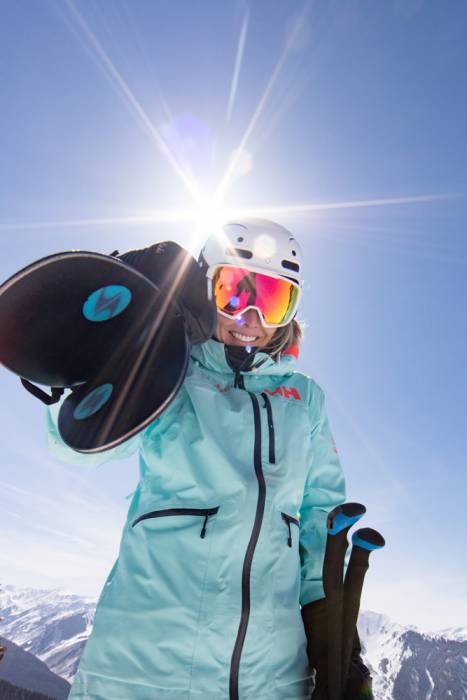Marketing says yes, hard-charging female skiers say no, but everyone agrees a softer, more playful ski has a place on the shop wall. And it’s too bad it’s always tagged for women.
“The ski doesn’t care which bathroom you use. It only responds to the energy coming from the skier,” said Mike Hattrup, veteran ski designer and Fischer alpine product manager. “We don’t need to make a difference where there isn’t one.”
Starting next season (winter 2020-2021), Fischer will strip skis of what Hattrup calls “marketing B.S.” And it will begin using the same construction in both men’s and women’s models. Only graphics will differentiate the two.
“Women’s skis are the embodiment of mansplaining,” said Louise Lintilhac, managing editor of Backcountry Magazine and former Freeride World Tour competitor.
“It doesn’t matter what gender you are, body type is body type. Your skiing ability isn’t gender-specific. We should be marketing to body weight and ability, not gender.”
So, do we even need women’s skis? And if so, should brands actually market them to women alone? I talked with brands and skied the goods to find out what’s up with purpose-built women’s skis.
Women’s Skis: The Anatomical Argument
Fisher’s position is that most differences between male and female skiers are manufactured.
Hattrup said, “If women’s physiology [in relation to skiing] was truly different, you would see different women’s and men’s skis on the World Cup,” he said. “The data isn’t there to support different skis or different mounting points.”
But most companies make women’s-specific skis, and many insist that’s what women should be skiing.
Leslie Baker-Brown — Blizzard-Tecnica global women’s program leader, three-time All-American skier, and the 1982 Giant Slalom national champion — took an opposing stand.
“Looking at women, we’re lighter, most of us are not as strong, and there are many women who will benefit from skiing women’s skis,” she said.
Baker-Brown believes that a woman’s anatomy does play a role in ski design and mounting. As such, Blizzard gears women’s skis toward females’ average weight, strength, and anatomy. “Our women’s skis are easier to ski and a little lighter than the men’s version,” Baker-Brown told us. “Which can be a more enjoyable experience. You don’t have to work as hard.”
She claims women carry their weight further back than men, and that because most women also have smaller feet than their male counterparts, moving the mounting point forward helps a female skier enter a turn more effectively. She even went so far as to acknowledge that lighter men could benefit from women’s skis, too.
Women’s Skis for Men?
In the case of the Blizzard Black Pearl, the top-selling ski in the U.S. for the past 3 years in any category, Blizzard built a ski that’s high-performance and easy to ski.
Seeing the success of that ski, and aware that men could benefit from the lighter, user-friendly construction, Blizzard created the Bushwhacker. With it, the brand took into account that not all men are self-confident enough to shred with their bros strapped into a “women’s” ski.
Sadly, it didn’t sell.
“I don’t know why,” Baker-Brown said. “Most men wanted a Bonafide or Brahma.”
Now, guys who want a softer-flexing Blizzard ski can have it — if they embrace the “women’s” Black Pearl ski.












